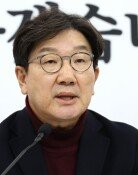Human-created art holds significance amid rise of AI in art field
Human-created art holds significance amid rise of AI in art field
Posted July. 06, 2023 07:51,
Updated July. 06, 2023 07:51
The Queen Elisabeth Competition is one of the three major international competitions held in a four-year cycle, featuring piano, cello, voice, and violin, respectively. In 2022, during the cello competition, which took place five years after the previous competition in 2017, a not-so-funny incident occurred during the first-round performance of Marcel Johannes Kits, an Estonian cellist who won the third prize.
During the first round, Marcel commenced his performance with Andre Jolivet’s Nocturne, accompanied by Japanese pianist Naoko Sonoda’s piano accompaniment. At the six-minute and thirty-four-second mark, an unexpected incident disrupted their seamless collaboration. Sonoda, who relied on a tablet PC to read the score instead of a traditional paper score, encountered a sudden malfunction. In a state of panic, she repeatedly tapped the unresponsive touchscreen, as she had not memorized the piece. Consequently, the piano fell silent for nearly 20 seconds, even though the music piece was an ensemble of cello and piano. This episode is often referred to as “every pianist’s nightmare” within the realm of classical music enthusiasts.
This incident is brought back to memory as we witness the integration of artificial intelligence and robot technology within the realm of arts and culture. On Saturday and Sunday, the Korea National Ballet presented “Physical Thinking+AI,” a collaborative work between humans and AI, at the CJ Towol Theater of the Seoul Arts Center. Lee Young-chul, a former principal dancer of the Korea National Ballet and current ballet master, provided a prompt to the AI, requesting it to create a short story exploring the intersection of a person’s life and the rise of AI. Using the story generated by Chat GPT, Mr. Lee composed music and choreography with the assistance of AI. On June 30, the National Orchestra of Korea showcased a unique performance featuring both a human conductor, Choi Soo-yeol, and a robot conductor known as EveR-6. The robot independently conducted two songs, leaving the audience truly amazed. However, Choi noted that the robot conductor fell short when establishing communication with orchestra members through eye contact and other means.
Let’s revisit the incident of Sonoda’s tablet PC malfunction. Pianist Son Yeol-eum was the pioneer in Korea to embrace electronic scores. In December 2011, during the Geumho Asiana Soloists’ Performance, Son performed Beethoven’s Symphony No. 9 in D Minor using her tablet PC, managing the page turns herself. Over a decade has passed, and electronic scores have become commonplace, significantly reducing the need for a “page-turner” during performances. However, had there been a page-turner present during Sonoda’s performance, the occurrence of such a nightmare scenario for pianists could have been avoided.
No matter how strong AI technology’s influence on art may be, what truly touches the heart is something created by a human. This is especially true in performance art, where the emotions conveyed to the audience can vary depending on the actor portraying a role and delivering the lines. Some attention was given to an AI that studied Freddie Mercury’s voice and sang Kim Gwang-seok’s “Near Thirty,” but it failed to reproduce the same feeling and emotional impact as the original singer. This is the essence of art–what machines cannot do, which is to imitate human sensitivity. Amid AI’s rapid advancements, the value of art created by humans has become even more precious.
Headline News
- Joint investigation headquarters asks Yoon to appear at the investigation office
- KDIC colonel: Cable ties and hoods to control NEC staff were prepared
- Results of real estate development diverged by accessibility to Gangnam
- New budget proposal reflecting Trump’s demand rejected
- Son Heung-min scores winning corner kick







